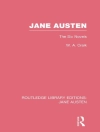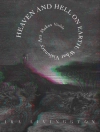New essays providing a wide-ranging cultural, social, and political picture of volatile between-the-wars Vienna.
Although beset by social, political, and economic instabilities, interwar Vienna was an exhilarating place, with pioneering developments in the arts and innovations in the social sphere. Research on the period long saw the city asa mere shadow of its former imperial self; more recently it has concentrated on high-profile individual figures or party politics. This volume of new essays widens the view, stretching disciplinary boundaries to consider the cultural and social movements that shaped the city. The collapse of the Austro-Hungarian Empire resulted not in an abandonment of the arts, but rather led to new forms of expression that were nevertheless conditioned by the legacies of earlier periods. The city’s culture was caught between extremes, from neopositivism to cultural pessimism, Catholic mysticism to Austro-Marxism, late Enlightenment liberalism to rabid antisemitism. Concentrating on the paradoxesand often productive tensions that these created, the volume’s twelve essays explore achievements and anxieties in fields ranging from modern dance, theater, music, film, and literature to economic, cultural, and racial policy. The volume will appeal to social, cultural, and political historians as well as to specialists in modern European literary and visual culture.
Contributors: Andrea Amort, Andrew Barker, Alys X. George, Deborah Holmes, Jon Hughes, Birgit Lang, Wolfgang Maderthaner, Therese Muxeneder, Birgit Peter, Lisa Silverman, Edward Timms, Robert Vilain, John Warren, Paul Weindling.
Deborah Holmes is Researcher at the Ludwig Boltzmann Institute for the History and Theory of Biography in Vienna. Lisa Silverman is Assistant Professor of History and Jewish Studies at the University of Wisconsin-Milwaukee.
Daftar Isi
Introduction: Beyond the Coffeehouse. Vienna as a Cultural Center between the World Wars – Deborah Holmes
Introduction: Beyond the Coffeehouse. Vienna as a Cultural Center between the World Wars – Lisa Silverman
Cultural Parameters between the Wars: A Reassessment of the Vienna Circles – Edward Timms
‘weisse Struempfe oder neue Kutten’: Cultural Decline in Vienna in the 1930s – John Warren
‘Wiener Kreise’: Jewishness, Politics, and Culture in Interwar Vienna – Wolfgang Maderthaner and Lisa Silverman
A City Regenerated: Eugenics, Race, and Welfare in Interwar Vienna – Paul Weindling
Free Dance in Interwar Vienna – Andrea Amort
Hollywood on the Danube? Vienna and Austrian Silent Film of the 1920s – Alys George
Between Tradition and a Longing for the Modern: Theater in Interwar Vienna – Birgit Peter
The Hegemony of German Music: Schoenberg’s Vienna as the Musical Center of the German-Speaking World – Therese Muxeneder
Anticipating Freud’s Pleasure Principle? A Reading of Ernst Weiss’s War Story ‘Franta Zlin’ (1919) –
Facts and Fiction: Rudolf Brunngraber, Otto Neurath, and Viennese
Neue Sachlichkeit – Jon Hughes
The Viennese Legacy of Casanova: The Late Erotic Writings of Arthur Schnitzler and Franz Blei – Birgit Lang
An Englishman Abroad: Literature, Politics, and Sex in John Lehmann’s Writings on Vienna in the 1930s – Robert Vilain
Notes on Contributors
Index
Tentang Penulis
ROBERT VILAIN is Senior Tutor and a Fellow of St Hugh’s College, Oxford, UK, and Lecturer in German at Christ Church.












